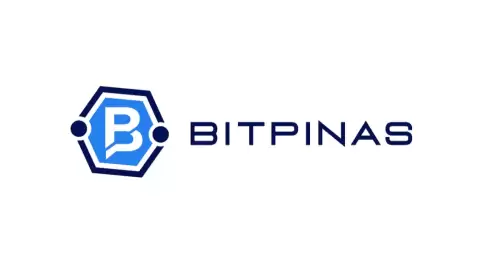 |
|
 |
|
 |
|
 |
|
 |
|
 |
|
 |
|
 |
|
 |
|
 |
|
 |
|
 |
|
 |
|
 |
|
 |
|
Raoul Pal에 따르면 Bitcoin의 가격은 전 세계 유동성 성장을 밀접하게 추적하며 가격 변동의 최대 90%를 설명합니다.
Bitcoin's price is notoriously sensitive to global liquidity, some analysts say it nearly perfectly tracks it with a lag of about three months. This relationship is fueling the current bullish narrative as BTC price soars back above $100,000. But how long can this trend last?
비트 코인의 가격은 글로벌 유동성에 악명 높다고 악명 높다고 일부 분석가들은 약 3 개월의 지연으로 거의 완벽하게 추적한다고 말합니다. 이 관계는 BTC 가격이 $ 100,000 이상으로 급증함에 따라 현재의 낙관적 이야기에 연료를 공급하고 있습니다. 그러나이 추세는 얼마나 오래 지속될 수 있습니까?
According to Raoul Pal, the founder of Global Macro Investor, global liquidity is closely tied to the increase in debt levels in many countries. In a recent speech, later recapped by Paul Guerra, Pal highlighted this connection, asserting that despite looming concerns—recession risks, geopolitical tensions, and other global stressors—liquidity is the dominant force behind asset price action.
Global Macro Investor의 창립자 인 Raoul Pal에 따르면 글로벌 유동성은 많은 국가의 부채 수준 증가와 밀접한 관련이 있습니다. 최근 연설에서 Paul Guerra에 의해 요약 된 Pal 은이 연결을 강조했다.
As he highlighted, we’re now in the 11th year of the bull market, an anomaly in itself, with risky assets like the Nasdaq and Bitcoin continuing to rise despite the narrative of a pending market crash. According to Pal, this resilience can be attributed to an "unyielding tide of global liquidity."
그가 강조한 바와 같이, 우리는 현재 Bull Market의 11 년째, 그 자체로는 Nasdaq 및 Bitcoin과 같은 위험한 자산이 보류중인 시장 붕괴에 대한 이야기에도 불구하고 계속 증가하고 있습니다. PAL에 따르면,이 탄력성은 "전 세계 유동성의 조수"에 기인 할 수 있습니다.
According to his calculations, global M2 liquidity, the broadest measure of the money supply, explains up to 90% of Bitcoin's price movements and as much as 97% of the Nasdaq's performance when considering a 12-week lag.
그의 계산에 따르면, 화폐 공급의 가장 광범위한 척도 인 Global M2 유동성은 Bitcoin의 가격 변동의 최대 90%와 12 주간 지연을 고려할 때 NASDAQ의 성과의 97%를 설명합니다.
A chart comparing global M2 (with a 12-week lead) and Bitcoin's price shows an almost uncanny alignment, especially over the past two years. The correlation is particularly striking over the shorter time frame, with periods of divergence often followed by convergence later in the cycle.
글로벌 M2 (12 주 리드)와 비트 코인의 가격을 비교 한 차트는 특히 지난 2 년 동안 거의 끊임없는 정렬을 보여줍니다. 상관 관계는 특히 짧은 기간에 걸쳐 특히 인상적이며, 이는 종종주기 후반에 수렴이 뒤 따릅니다.
Pal also frames the issue in personal finance terms. He says there's an 11% "hidden tax" on all of us, composed of 8% currency debasement and 3% global inflation. According to Pal, this tax ultimately flows to governments and central banks, impacting everyone through changes in the purchasing power of our money.
PAL은 또한 개인 금융 용어로 문제를 구성합니다. 그는 우리 모두에게 8% 통화 퇴치와 3%의 글로벌 인플레이션으로 구성된 11%의 "숨겨진 세금"이 있다고 말합니다. PAL에 따르면,이 세금은 궁극적으로 정부와 중앙 은행으로 흐르며, 우리 돈의 구매력의 변화를 통해 모든 사람에게 영향을 미칩니다.
In the long term, this new tax is part of a broader trend of global liquidity expansion, which began in the wake of the 2008 financial crisis with a focus on U.S. dollar liquidity. Over the past 15 years, we've seen a nearly linear increase in global M2, with a slight uptick in 2018 due to the People's Bank of China's (PBoC) actions.
장기적으로,이 새로운 세금은 2008 년 금융 위기의 이후 미국 달러 유동성에 중점을 둔 광범위한 글로벌 유동성 확장 추세의 일부입니다. 지난 15 년 동안, 우리는 2018 년 중국 인민 은행 (PBOC) 조치로 인해 약간의 선형이 증가한 것으로 나타났습니다.
This offers a high-level view of global liquidity and suggests its long-term expansion is structural. However, this growth isn't linear. Over shorter time frames, it fluctuates based on specific drivers.
이것은 글로벌 유동성에 대한 높은 수준의 관점을 제공하며 장기 확장이 구조적임을 시사합니다. 그러나이 성장은 선형이 아닙니다. 짧은 시간에 걸쳐 특정 드라이버를 기반으로 변동합니다.
As reported by Capital Economics, in the short term, three main factors influence global liquidity: the U.S. Federal Reserve, the PBoC, and banks lending through collateral markets.
Capital Economics에 의해보고 된 바와 같이, 단기적으로 3 가지 주요 요인은 세계 유동성에 영향을 미칩니다. 미국 연방 준비 제도 이사회, PBOC 및 은행은 담보 시장을 통한 은행입니다.
On the bright side, the weak global economy and a softening dollar usually bode well for liquidity. But rising bond volatility, a key indicator of collateral scarcity and tightening credit conditions, is choking lending and ultimately undermines liquidity.
밝은면에서, 약한 세계 경제와 연화 달러는 일반적으로 유동성에 적합합니다. 그러나 부수적 부족과 신용 조건 강화의 주요 지표 인 채권 변동성 상승은 대출을 질식시키고 궁극적으로 유동성을 약화시키는 것입니다.
Together with the strong demand for U.S. Treasury bonds, this dynamic is crucial for understanding the ebb and flow of global liquidity.
미국 재무부 채권에 대한 강한 수요와 함께이 역학은 글로벌 유동성의 썰물과 흐름을 이해하는 데 중요합니다.
According to Michael Howell, author of "Capital Wars," these two forces are now converging, setting the stage for a potential turning point in the cycle.
"Capital Wars"의 저자 인 Michael Howell에 따르면,이 두 세력은 이제 수렴하고 있으며, 사이클의 잠재적 전환점의 단계를 설정하고 있습니다.
As Howell explains, global liquidity moves in roughly five-year cycles, with each cycle marked by a specific driver and a unique time frame. The current cycle, which began with the PBoC injecting liquidity into the system in response to the COVID-19 crisis, is nearing its peak.
Howell이 설명했듯이, 글로벌 유동성은 대략 5 년 주기로 이동하며, 각주기는 특정 드라이버와 고유 한 기간으로 표시됩니다. COVID-19 위기에 대한 응답으로 PBOC가 시스템에 유동성을 주입하여 시작된 현재주기는 그 최고점에 가깝습니다.
Howell projects this cycle to mature by mid-2026, reaching an index level of around 70 (below the post-COVID index of 90). This would mark a turning point, with a subsequent downturn being a likely outcome.
Howell은이주기를 20126 년 중반까지 성숙하여 약 70의 인덱스 수준에 도달했습니다 (코비드 후 지수 90 미만). 이것은 전환점이 될 것이며, 후속 침체는 결과 일 가능성이 높습니다.
This pessimistic outlook is partly due to the rapid pace of global liquidity expansion, which is occurring at an unprecedented rate. In the past, such rapid increases in liquidity were usually followed by periods of contraction, as seen in the 1970s and 1980s.
이 비관적 전망은 부분적으로 전례없는 속도로 발생하는 글로벌 유동성 확장의 빠른 속도 때문입니다. 과거에는 1970 년대와 1980 년대에 볼 수 있듯이 유동성의 급속한 증가는 일반적으로 수축 기간이 뒤 따랐다.
However, the current cycle is unfolding against the backdrop of a persistently weak global economy, which is likely to prompt further easing by central banks.
그러나 현재의주기는 지속적으로 약한 세계 경제의 배경에 비해 전개되고 있으며, 이는 중앙 은행의 추가 완화를 자극 할 가능성이 높습니다.
The Fed, in particular, faces a difficult choice: continue fighting inflation or pivot to support an increasingly fragile financial system. At its May 7 meeting, rates were held steady, but the pressure on Chair Jerome Powell is mounting, especially from US President Donald Trump, who urged the Fed to cut rates to zero to help the economy.
특히 연준은 어려운 선택에 직면 해 있습니다. 점점 더 깨지기 쉬운 금융 시스템을 지원하기 위해 인플레이션이나 피벗을 계속하고 있습니다. 5 월 7 일 회의에서 금리가 꾸준히 유지되었지만 제롬 파웰 (Jerome Powell) 의장에 대한 압력은 특히 도널드 트럼프 미국 대통령으로부터 경제를 돕기 위해 금리를 삭감하도록 촉구했다.
At the same time, economic uncertainty is driving up U.S. Treasury yields and fueling bond market volatility, both indicators of collateral scarcity and tightening credit conditions. Over time, these pressures are likely to become headwinds for liquidity expansion.
동시에, 경제적 불확실성은 미국 재무부 수익률을 높이고 채권 시장 변동성을 불러 일으키고 있으며, 부수적 부족의 지표와 신용 조건이 강화되고 있습니다. 시간이 지남에 따라 이러한 압력은 유동성 확장을위한 역풍이 될 것입니다.
Moreover, a looming recession is expected to weaken investor risk appetite, further draining liquidity from the system. This pessimistic outlook stands in stark contrast to the bullish view of market analyst Tom DeMark, who predicts
더욱이, 어두운 경기 침체는 투자자 위험 식욕을 약화시켜 시스템에서 유동성을 더욱 배출 할 것으로 예상됩니다. 이 비관적 인 전망은 시장 분석가 Tom Demark의 낙관적 견해와는 대조적입니다.
부인 성명:info@kdj.com
제공된 정보는 거래 조언이 아닙니다. kdj.com은 이 기사에 제공된 정보를 기반으로 이루어진 투자에 대해 어떠한 책임도 지지 않습니다. 암호화폐는 변동성이 매우 높으므로 철저한 조사 후 신중하게 투자하는 것이 좋습니다!
본 웹사이트에 사용된 내용이 귀하의 저작권을 침해한다고 판단되는 경우, 즉시 당사(info@kdj.com)로 연락주시면 즉시 삭제하도록 하겠습니다.





























































